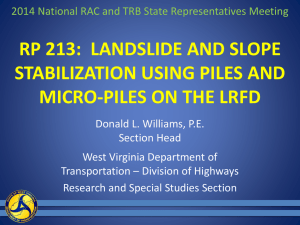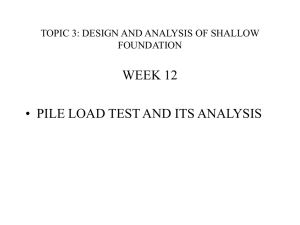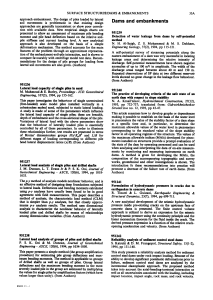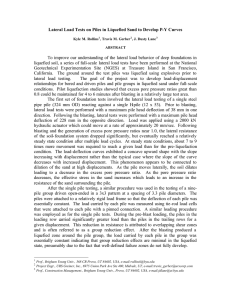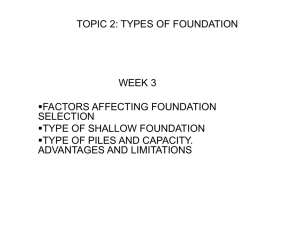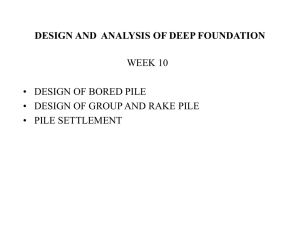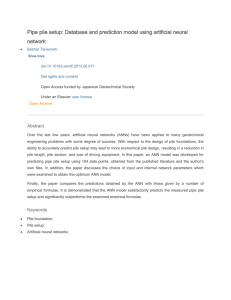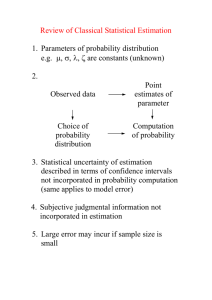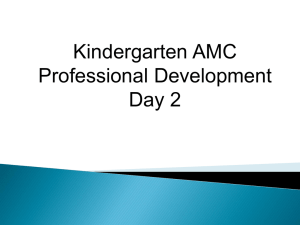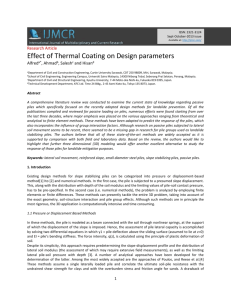Abstract - GeoMontreal 2013
advertisement
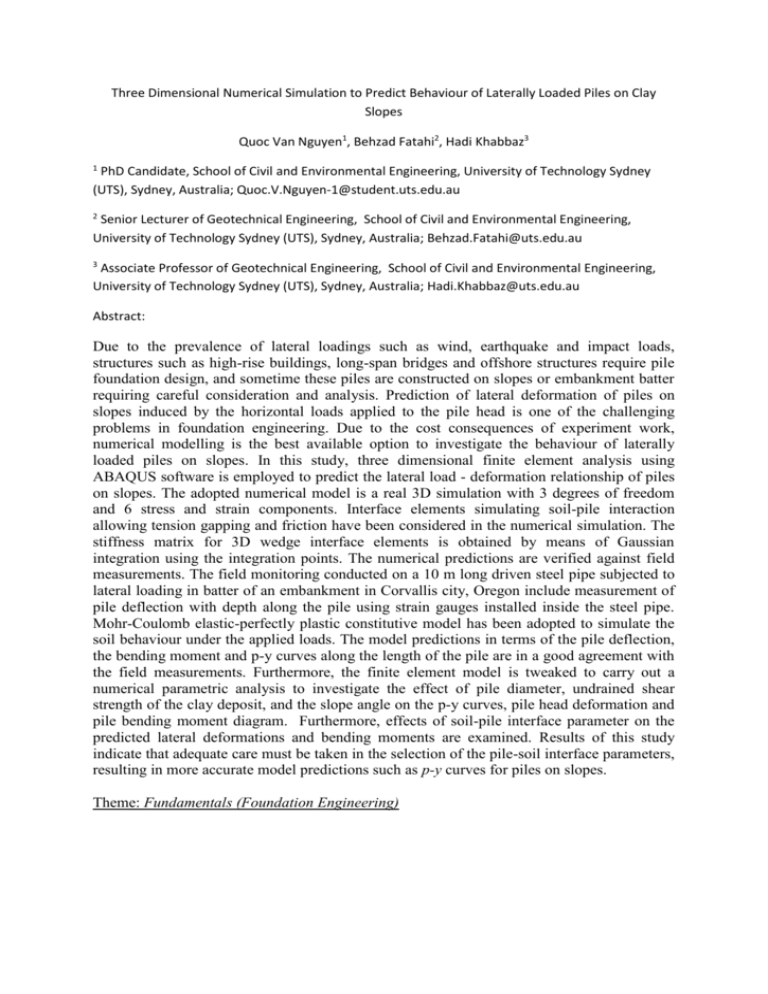
Three Dimensional Numerical Simulation to Predict Behaviour of Laterally Loaded Piles on Clay Slopes Quoc Van Nguyen1, Behzad Fatahi2, Hadi Khabbaz3 1 PhD Candidate, School of Civil and Environmental Engineering, University of Technology Sydney (UTS), Sydney, Australia; Quoc.V.Nguyen-1@student.uts.edu.au 2 Senior Lecturer of Geotechnical Engineering, School of Civil and Environmental Engineering, University of Technology Sydney (UTS), Sydney, Australia; Behzad.Fatahi@uts.edu.au 3 Associate Professor of Geotechnical Engineering, School of Civil and Environmental Engineering, University of Technology Sydney (UTS), Sydney, Australia; Hadi.Khabbaz@uts.edu.au Abstract: Due to the prevalence of lateral loadings such as wind, earthquake and impact loads, structures such as high-rise buildings, long-span bridges and offshore structures require pile foundation design, and sometime these piles are constructed on slopes or embankment batter requiring careful consideration and analysis. Prediction of lateral deformation of piles on slopes induced by the horizontal loads applied to the pile head is one of the challenging problems in foundation engineering. Due to the cost consequences of experiment work, numerical modelling is the best available option to investigate the behaviour of laterally loaded piles on slopes. In this study, three dimensional finite element analysis using ABAQUS software is employed to predict the lateral load - deformation relationship of piles on slopes. The adopted numerical model is a real 3D simulation with 3 degrees of freedom and 6 stress and strain components. Interface elements simulating soil-pile interaction allowing tension gapping and friction have been considered in the numerical simulation. The stiffness matrix for 3D wedge interface elements is obtained by means of Gaussian integration using the integration points. The numerical predictions are verified against field measurements. The field monitoring conducted on a 10 m long driven steel pipe subjected to lateral loading in batter of an embankment in Corvallis city, Oregon include measurement of pile deflection with depth along the pile using strain gauges installed inside the steel pipe. Mohr-Coulomb elastic-perfectly plastic constitutive model has been adopted to simulate the soil behaviour under the applied loads. The model predictions in terms of the pile deflection, the bending moment and p-y curves along the length of the pile are in a good agreement with the field measurements. Furthermore, the finite element model is tweaked to carry out a numerical parametric analysis to investigate the effect of pile diameter, undrained shear strength of the clay deposit, and the slope angle on the p-y curves, pile head deformation and pile bending moment diagram. Furthermore, effects of soil-pile interface parameter on the predicted lateral deformations and bending moments are examined. Results of this study indicate that adequate care must be taken in the selection of the pile-soil interface parameters, resulting in more accurate model predictions such as p-y curves for piles on slopes. Theme: Fundamentals (Foundation Engineering)
